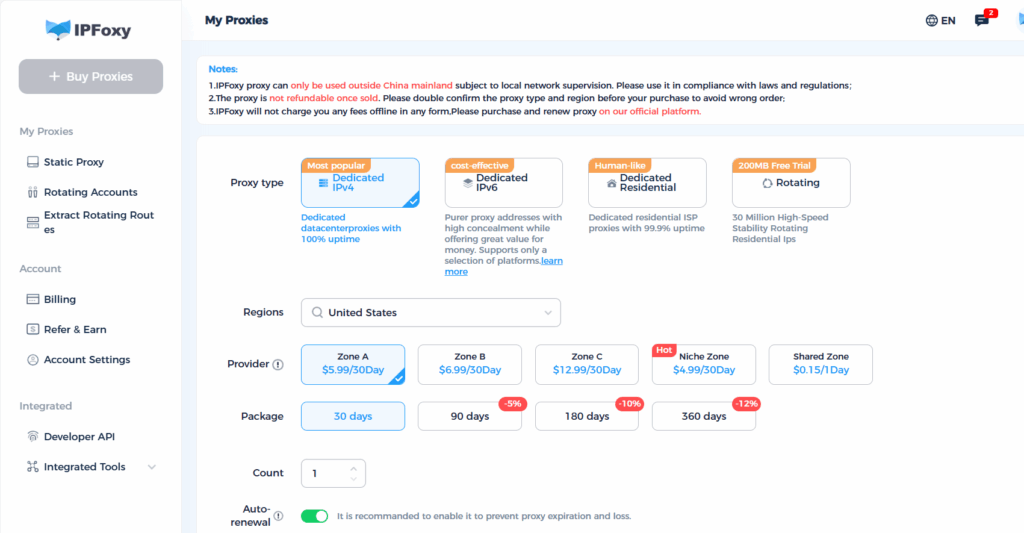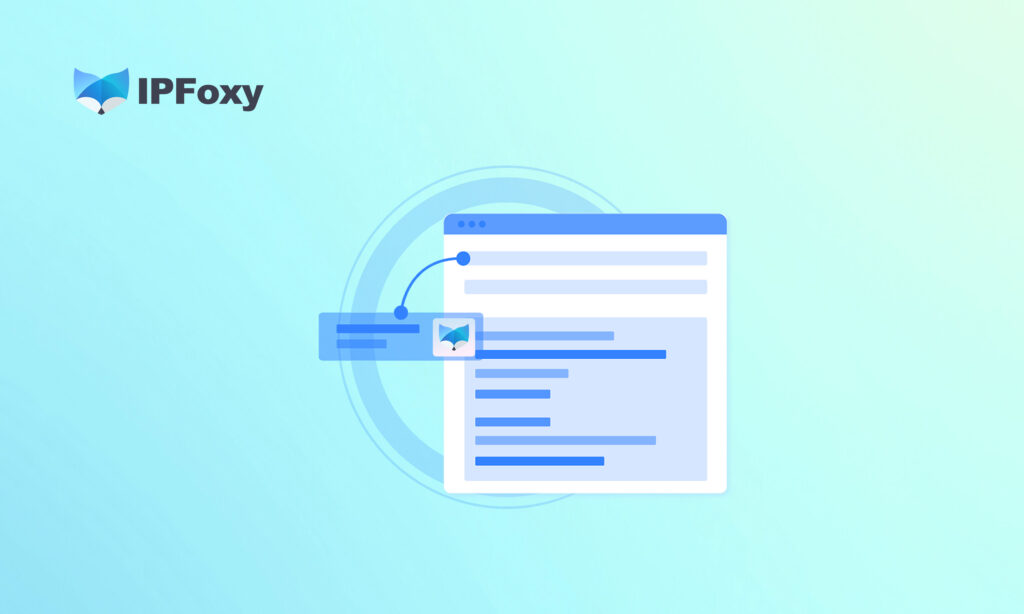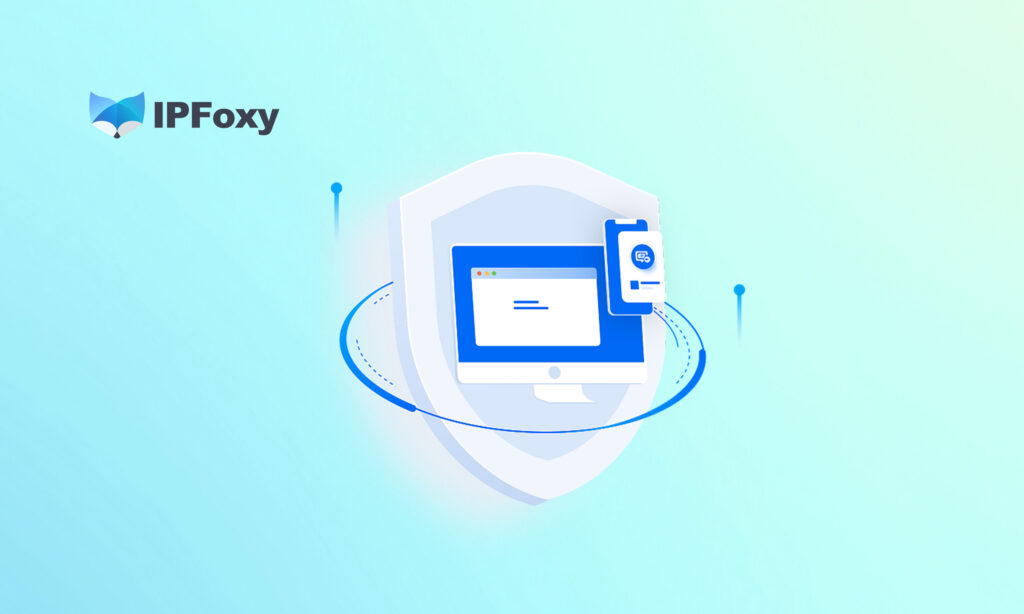In today’s interconnected world, your IP address is like your “ID” and “address” in the digital realm. Whether browsing the web, streaming videos, or conducting cross-border transactions, every network request relies on it. However, have you ever experienced:
- Sluggish speeds when accessing certain websites?
- Your e-commerce store being unexpectedly banned with no clear reason?
- Sudden login restrictions on your overseas social media accounts?
Behind these issues, the culprit is often related to IP geolocation restrictions and security risk controls. And that’s where proxy tunneling comes in—it’s the key to solving these problems.
I. What Is Proxy IP Tunneling?
Proxy acts as an intermediary in the network. In the entire process, the target server sees the IP address of the proxy rather than your real IP. The basic workflow looks like this:
- User request: Your device accesses the target server.
- Connect to proxy node: The request is first sent to an intermediate proxy server.
- Proxy requests on your behalf: The proxy server sends the request to the target server using its own IP address.
- Data response: The target server’s response is first sent to the proxy server, then forwarded to your device.

II. When Should You Use Proxy IP Tunneling?
1. Accessing Restricted Resources:
- Scenario: Accessing streaming services (like Netflix, Hulu) or news sites in certain countries/regions.
- How it works: Using a proxy from the target region, the service thinks you’re from an authorized area and grants access.
2. E-commerce and Marketing:
- Scenario: Managing multiple Amazon, eBay, Shopify stores; safely operating TikTok, Facebook, Instagram accounts; conducting localized market research and ad campaigns.
- How it works: Assigning a unique, stable local IP to each store/account helps prevent bans due to IP associations and makes your actions appear more “localized,” improving ad targeting accuracy.
3. Enhancing Privacy and Security:
- Scenario: Hiding your real IP to avoid tracking; adding a layer of protection when using public Wi-Fi.
- How it works: The target server and potential network snoopers can only see the proxy.
4. Web Crawling and Data Scraping:
- Scenario: Efficiently and steadily scraping publicly available web data.
- How it works: Using a large pool of rotating proxy to avoid being blocked due to too many requests from a single IP.
III. Proxy Tunneling Common Q&A
Q: Is using proxy tunneling legal?
A: Proxy tunneling technology itself is neutral and legal. Its legality depends on the specific use case. However, note that proxy services require users to already be outside your country. Always comply with local laws and service platform policies.
Q: Will proxy tunneling affect my internet speed?
A: It might, but it’s not guaranteed to slow down. In fact, it could even improve speed depending on the following factors:
- Original connection vs. proxy connection quality: If the proxy node has poor performance, limited bandwidth, or suboptimal routing, it will slow things down.
- “Hops” increase: Technically, this adds a slight delay (usually a few milliseconds to tens of milliseconds). However, for long-distance connections, the routing optimizations provided by a high-quality proxy often outweigh the delay.
- Node load: Shared proxy nodes can become congested if too many users are connected or the management is poor. Choosing a reputable provider with sufficient resources is crucial.
Q: How many proxy layers can I use?
A: Technically, you can use multiple layers (proxy chains). Sometimes adding an extra layer can improve speed or anonymity.
- Single layer (You → Proxy A → Target): Most common; fast and stable, satisfying most needs (e.g., IP change, preventing account linkage).
- Multi-layer (You → Proxy A → Proxy B → Target): Used for extreme anonymity or specific regional needs.
Q: What’s the difference between free and paid proxy services?
A: There’s a huge difference!
- Free proxies: Poor quality (blacklisted IPs, abused IPs), slow, unstable, no security guarantees (may be monitored or injected with malware), few nodes, no customer support, and easy to get blocked by target websites. It’s strongly advised not to use free proxies for important tasks (like e-commerce or social media accounts).
- Paid proxies: Typically provide clean residential IPs or high-quality data center IPs, fast and stable bandwidth, professional support—essential for business applications and stable access.
Q: How do I choose a reliable proxy service?
A: Look out for these factors:
- IP type and quality: Do they offer clean residential IPs or static ISP IPs? Is their proxy pool large and clean?
- Geographical coverage: Do they cover the countries and regions you need?
- Speed and stability: Do they guarantee bandwidth? Is the network optimized?
- Protocol support: Do they support common protocols like Socks5, HTTP(S)?
- Management and ease of use: Do they provide a solid API? Is the backend user-friendly?
Among the many proxy service providers, IPFoxy offers solutions for users and businesses who require stable, efficient, and refined proxy management, making it suitable for most business needs. (Tip: Always research and test any service before committing based on your specific needs.)

IV. Conclusion
Understanding how proxy tunneling works and where to apply it can help you navigate the digital world more freely, efficiently, and securely. Whether you’re an individual user or a business, using high-quality proxy services within legal and compliant boundaries can unlock broader internet access and open up new business opportunities.


